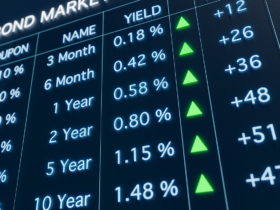
According to the latest Quarterly Report on Household Debt and Credit, total household debt increased 1.4% to $14.56 trillion in Q4 of 2020. This increase was driven in part by a steep increase in mortgage originations. (New York Fed)
- Obviously an increase in household debt is rising some red flags, but all debt is not created equal. Mortgage debt is not as concerning especially when we are discussing occupancy rates. In 2008, occupancy rates reached an all-time high of 2.8%.This means more houses were being built than there were people to live in them. That is not the case in 2021.
At the start of the month, the Census Bureau reported that the homeowner vacancy rate of 1.0% was at a historic low proving that even though housing construction is up so are willing occupants. However, rising rates could indicate a slow down potential buyers.
Mortgage applications decreased 5.1 percent from one week earlier, according to data from Weekly Mortgage Applications Survey (Mortgage Bankers Association)
The Refinance Index dropped 5% compared to the previous week but was still 51% higher than the same week one year ago
- The refinance share of mortgage activity fell once again to 69.3%. Last week it was 70.2%.
The Purchase Index, on a seasonally adjusted basis, decreased 6% from one week earlier but the unadjusted index was up 15% from the same week one year ago.
- The average purchase loan size hit another high at $412,200
The average contract interest rate increased to 2.98% from 2.96%, with points increasing to 0.43 from 0.36.
Joel Kan, MBA’s Associate Vice President of Economic and Industry Forecasting, said in a statement, “Expectations of faster economic growth and inflation continue to push Treasury yields and mortgage rates higher. Since hitting a survey low in December, the 30-year fixed rate has slowly risen, and last week climbed to its highest level since November 2020,”





Got a Questions?
Find us on Socials or Contact us and we’ll get back to you as soon as possible.